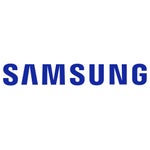News
Samsung Galaxy S26 Camera to Get Thinner with Inkjet Technology
Samsung Galaxy S26 Camera to Get Thinner with Inkjet Technology
Samsung is once again leading smartphone innovation, this time by targeting one of the last bulky holdouts in modern phone design: the camera bump. In the upcoming Galaxy S26 series, the company is expected to introduce a cutting-edge solution utilizing inkjet printing with matte ink to replace traditional anti-reflective films within the camera lens modules. The result? Thinner camera stacks and a sleeker device profile. While the physical difference may seem minimal, it represents a strategic shift that could significantly reshape how future phones are engineered for both performance and design. Let's break down what this means for the Galaxy S26 camera system and why it matters.
What's New in the Samsung Galaxy S26 Camera System?
Samsung is reportedly revamping its camera construction strategy with the S26 series by implementing inkjet printing, which applies matte ink directly to the camera lenses. Traditionally, manufacturers use films inside the lens modules to prevent light reflection and overlap. However, the film has a physical thickness and limits how much space can be saved.
Key Innovations:
-
Inkjet Printing Technology: Allows precise application of anti-reflective matte ink.
-
Matte Ink Application: Replaces conventional film, offering the same optical benefit in a thinner format.
-
Thinner Camera Modules: Multiple stacked lenses benefit from accumulated space savings.
-
Camera Bump Reduction: The overall profile of the camera array is expected to shrink slightly.
While the difference in individual lenses might be slight, when multiplied across stacked lens layers, the cumulative gain could be significant enough to visibly reduce camera bump thickness, a persistent pain point in modern smartphone design.
Why Ink Matters: Engineering Meets Aesthetics
Samsung's pivot to ink over film isn't just an optical adjustment; it's a calculated move in industrial design. As flagship models become thinner, even tiny components like lens films can disrupt design harmony.
Using ink instead of film offers several benefits:
-
Improved thermal efficiency (film can act as insulation, ink layers are thinner)
-
Greater design flexibility
-
Consistency in camera module fabrication
-
Enhanced light reflection control with customizable ink formulations
This approach is reminiscent of semiconductor miniaturization, where every layer and component must be optimized to the micron. For Samsung, it's not just about aesthetic refinement. It's about leadership in smartphone engineering.
Context: A Thinner Future for Flagships
The Galaxy S26 series follows closely on the heels of the Galaxy S25 Edge, which already emphasized ultra-thin design as a core feature. Samsung priced the S25 Edge starting at:
Variant Price
256GB + 12GB RAM $1,099.99 / £1,099.00
512GB + 12GB RAM $1,099.99 / €1,249.00
With the S25 Edge, Samsung proved that slimming devices doesn't mean sacrificing performance. The Galaxy S26 camera redesign builds on this philosophy by tackling the one area that still resists flatness: camera bumps.
Apple's rumored iPhone 17 Air is also aiming to minimize camera protrusion, showing that thinness is no longer just a design trend. It's an industry-wide mandate.
How Does It Compare to Previous Generations?
Samsung's evolution from the Galaxy S24 to S25 and now S26 has been marked by subtle but meaningful engineering tweaks. Where the S24 prioritized raw power and the S25 Edge pushed device thinness, the S26 focuses on optical compactness.
Camera modules have traditionally been bulky due to the need for multiple elements:
-
Sensor layer
-
Optical film layer
-
Anti-reflective coating
-
Protective glass
Replacing one of these with a printed ink solution can decrease the stack's height without compromising quality. This, in turn, allows for a sleeker phone body without requiring a redesign of the entire camera system.
Samsung vs. Apple: The Race to Sleek
As Samsung transitions to an ink-based camera structure, Apple is reportedly preparing to enter the ultra-thin race with its iPhone 17 Air. While both companies are known for using proprietary optical technologies, Samsung's inkjet approach may give it a competitive edge in terms of manufacturing scalability and design precision.
This also signals a broader industry shift: thinner, smarter optical stacks that don't sacrifice image quality. The S26 may not have the largest sensor or the most megapixels, but its camera engineering story will likely be its most significant differentiator.
Expert Insights: Why This Matters
Camera bumps are a frequently criticized compromise in flagship phones. While bigger sensors improve image quality, they also lead to protrusions that disrupt usability and case compatibility. Reducing this without downsizing the sensor is a technical feat.
According to industry insiders, inkjet solutions are:
-
Easier to scale in mass production
-
Cost-effective over traditional films
-
More customizable for multi-camera setups
Frequently Asked Questions
1. What is new about the Samsung Galaxy S26 camera?
Samsung is introducing inkjet-printed matte ink inside the lens modules to reduce the thickness of the camera bump without affecting performance.
2. How does inkjet technology help reduce the size of a camera?
It replaces the traditional anti-reflective film, allowing for a thinner optical stack while maintaining image quality.
3. How does the S26 compare to the S25 Edge?
The S26 builds on the S25 Edge's focus on thin design by further refining the camera system's thickness.
Related Articles
-
Samsung Galaxy S25 Edge Official: Pre-order Details, Pricing
- Samsung Galaxy S26 Series Return to Exynos
Conclusion:
-
The Samsung Galaxy S26 camera update may not grab headlines with megapixel counts or AI tricks, but it quietly introduces a fundamental change in how smartphone cameras are built.
-
By replacing film layers with inkjet-printed matte ink, Samsung is refining not just its cameras but its design ethos.
-
This micro-level engineering could have macro-level impacts on smartphone aesthetics and ergonomics in the years ahead.
-
In a world where flat is the new frontier, Samsung is ready to lead.












